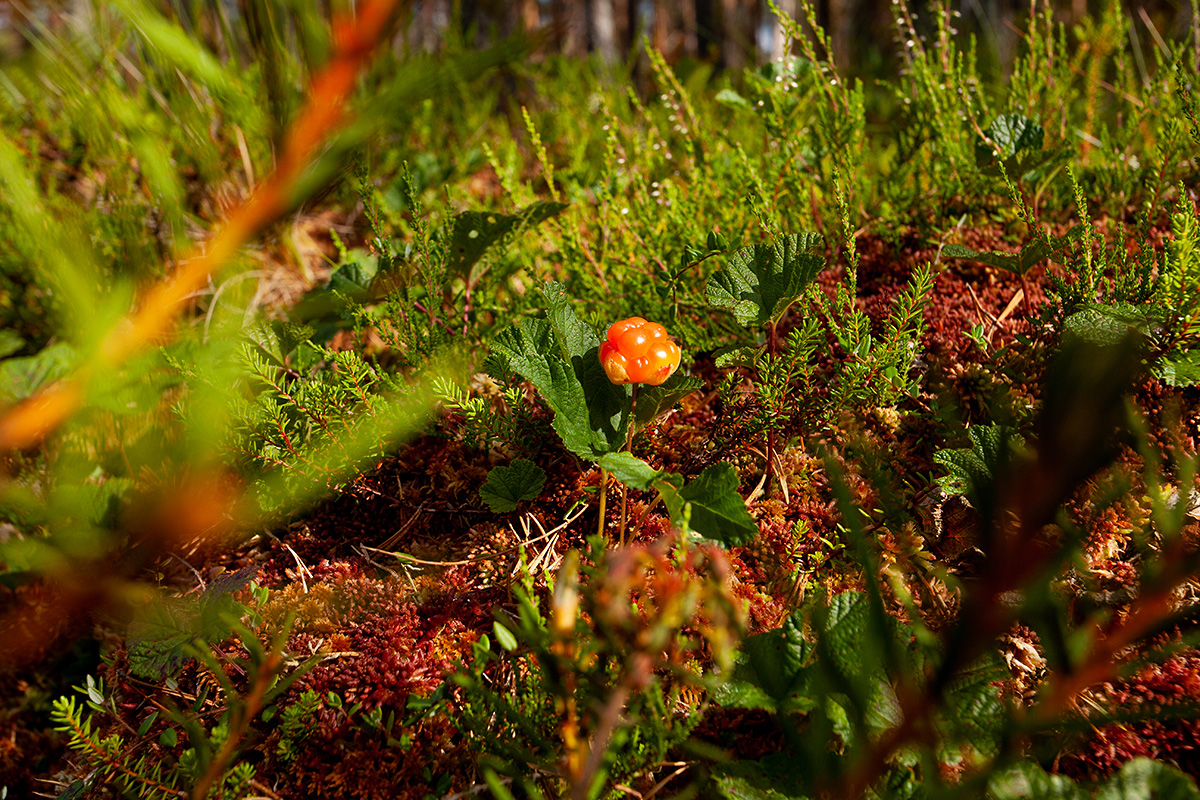The biggest threat to Estonian mire biota is the impact of previous drainage
The special environmental conditions create suitable habitats for many different species in the mires. 280 species of vascular plants and 153 species of moss grow in Estonian mires. Most plant species (230) grow in minerotrophic fens, 103 species in mixotrophic fens, and 45 species in bogs. More than 300 species of spiders, more than 1,600 species of insects, more than 200 species of birds, 11 species of mammals, 4 species of amphibians, and 3 (5) species of reptiles live in Estonian mires. There are four very rare species of protected category I mire plants (southern marsh orchid, Ligularia sibirica, ghost orchid, hard rush). More than 30 protected category II plant species grow in our mires, and the same number of endangered and protected animal species can be found living in mires, 26 of which are bird species [1].

Before large-scale drainage of mires began in the 1960s, minerotrophic fens covered the largest area in Estonia – approximately 57% of the total area of mire areas; raised bogs accounted for a third, and mixotrophic fens for just over a tenth [2]. During about half a century, there was a significant decrease in the total area of both minerotrophic and mixotrophic fens, and by the turn of the century, more than 80% of Estonian mires were raised bogs [3]. The reasons for the changes lie in drainage. As early as a quarter of a century ago, scientists pointed out that because about 70% of our mires have been drained or affected by drainage, they have ceased to function as a proper mire ecosystem, including as habitats for species living only or mostly in mires [4].
As a result of drainage, the water level in the mire decreases and the water quality changes, the peat deposit collapses and mineralises, and greenhouse gases begin to be released. Due to drainage, the development of the shrub layer and the forest stand will accelerate and the general species composition of the vegetation will change. The trees that start to grow, in turn, make the habitat unfavourable for open field mire species. Changes in the water regime of the mire thus lead to developments that make living conditions there unfavourable for many mire plants and animals.
Following the drainage of mires, other major risk factors are the drainage of adjacent areas (mainly forest drainage) and peat extraction.
The mires also act as an effective natural purifier of water and an important preserver of clean water. As a result of economic activities, the ecological function of drained mires and their ability to provide natural benefits are often quite severely disturbed or completely lost. Thus, the drainage of the mires also indirectly affects the well-being of species living in distant rivers and elsewhere.
Today, a large part of Estonian mires are under nature conservation – this is an attempt to ensure that their condition does not deteriorate, but rather improves. An action plan for 2016–2023 has been prepared for the preservation and restoration of the biodiversity and benefits of protected mires in Estonia.
Last modified: 08.11.2021
____________________________________________________________________________________
[1] Kaitstavate soode tegevuskava. Eesti Looduse Fond, Keskkonnaministeerium, 2015.
[2] A. Truu, H. Kurm, K. Veber, K. Eesti NSV sood ja nende põllumajanduslik kasutamine. Tallinn: Eesti NSV sood, 1964, lk 108–110
[3] R. Pajula. Eesti soode jätkusuutlik kasutamine. Eesti Märgalade ühing, TLÜ Ökoloogia Instituut. Ettekanne 4.-5.11.2005.
[4] M. Ilomets. Flexible policies in a changing world: 70 years of mire conservation in Estonia. In: Grünig, A. (Ed.). Mires and Man. Mire conservation in a Densily Populated Country – the Swiss Experience, 324−327, Birmensdorf: Swiss Federal Institute for Forest, Snow and Landscape Research (WSL), 1994